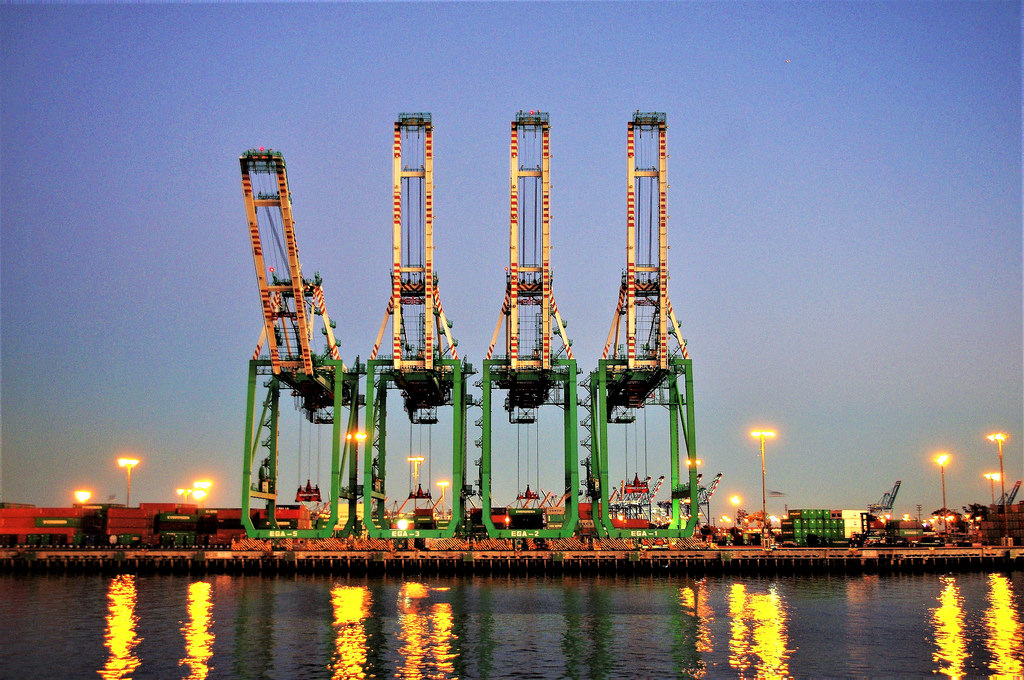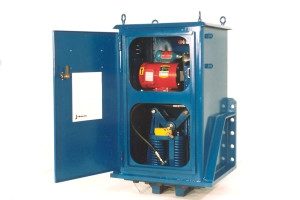
High speed container crane fitted with Johnson Storm Brakes (Rail Clamps) and rail brakes, Thruster Drum Brakes and emergency caliper Disc Brakes acting directly on hoist flange.

Rail Clamp, truck end mounting style, complete with an integral Hydraulic Power System mounted inside the same enclosure
The Port Crane industry requires many brake systems on the Crane Hoists and the Drive systems that move the crane along the rail. In addition to the brake systems, a method of clamping the rails is required so that no movement occurs in the event of high wind forces. On hoists, the safest operation is with a dual braking method. The brakes should be mounted to the high-speed side of the gearbox and directly to the cable drum on the low speed side of the gearbox in case of a broken shaft or gears.
Understanding the Intricacies of Port Crane Storm Brakes
In the dynamic world of port operations, safety and reliability remain paramount. Port Crane Storm Brakes, an essential element in this safety chain, stand out not just for their primary braking function, but for their intricate design and multifaceted roles. At the heart of these braking systems are the rail clamps, which serve a pivotal role in anchoring the crane. Especially in conditions of high winds or external forces, these clamps ensure that the crane remains stationary, preventing any unintended movement that could lead to catastrophic consequences. Additionally, the drive brakes provide an added layer of security, ensuring smooth, controlled movement when the crane is in operation. These brakes are meticulously engineered to mount on the high-speed side of the gearbox. Additional brakes are required which act directly to the cable drum on the low-speed side, a design choice that acts as a failsafe in the event of broken shafts or gears. Together, the rail clamps, drive brakes, and hoist brakes form an integrated system that encapsulates the essence of precision, safety, and reliability in port crane operations.
